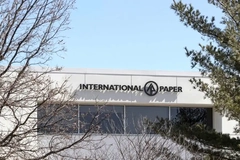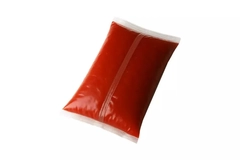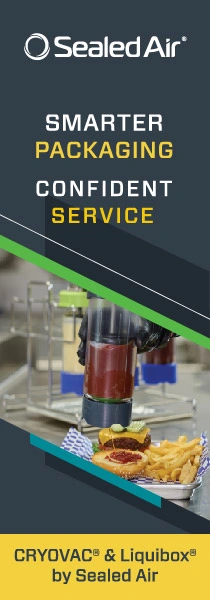Sealed Air unveils recycle-ready flexible pack for pumpable foods
Key takeaways
- Sealed Air has launched Cryovac VPP MonoPro, a recycle-ready VFFS pack for fluid and pumpable foods.
- Monomaterial film offers high-barrier protection, extended shelf life, and compatibility with existing machinery.
- The launch comes as Sealed Air agrees to a US$10.3 billion acquisition by CD&R amid continued sustainability-driven packaging innovation.
Sealed Air has launched the Cryovac VPP MonoPro, a vertical form-fill-seal (VFFS) pack for fluid and pumpable foods.
The solution is certified as recycle-ready by Cyclose HTP and features high barrier properties that aim to protect and extend product shelf life. It is said to be compatible with existing VFFS machinery.
The monomaterial film has a low polyamide (PA) content, available in variations of 0% or 10% PA. The solution is also available in transparent and pigmented versions.
“These advanced films help preserve product freshness, prevent contamination, and significantly extend shelf life. Ideal for ambient and hot fill applications, they ensure reliable protection across various foodservice packaging needs,” says Sealed Air.
Cryovac VPP MonoPro has applications for soups, sauces, purees, proteins, and syrups. The solution aims to enable operational efficiency, food safety, and help food processors switch from traditional multi-material films to monomaterial solutions.
Investment in Sealed Air
The launch comes as Sealed Air recently entered into a definitive agreement in which it will be acquired by funds affiliated with CD&R. The private investment firm will purchase the food and protective packaging giant for US$10.3 billion.
Industry analyst Neil Farmer told Packaging Insights that the supplier’s protective packaging business has struggled over the last four to five years, and while food packaging has performed better in the last year, overall sales were down by 1.5% in Q3.
Additionally, Sealed Air’s Cryovac brand features the Vegan Trademark for its Sealappeal flexible packaging range, which replaces animal derivatives in food packaging with non-animal fats and hydrocarbon waxes.
Food waste and protection
Packaging manufacturers are increasingly innovating to design solutions that reduce food waste and meet sustainability requirements, such as recyclability.
In an interview, Nerida Kelton, vice president for sustainability and safe food at the World Packaging Organisation, discussed with us certain trade-offs involved in designing packaging that reduces food waste and is sustainable.
She said: “What a lot of people are also forgetting is that if we’re talking about food packaging, we have to ensure that it’s the most appropriate material to protect it, to preserve it, and to have that extension of shelf life. And unfortunately, at this moment in time, sometimes there just aren’t alternate materials that are going to protect food, or have that shelf life that people want.”











